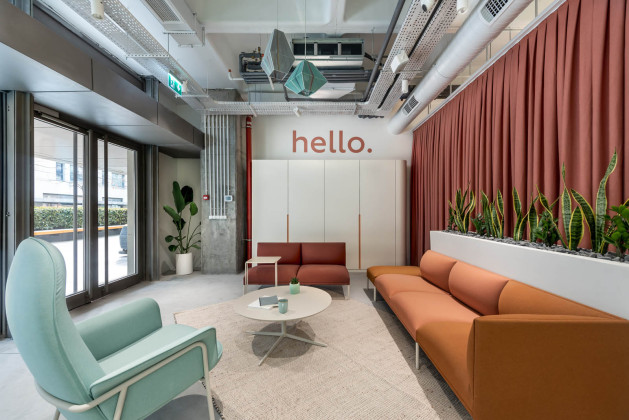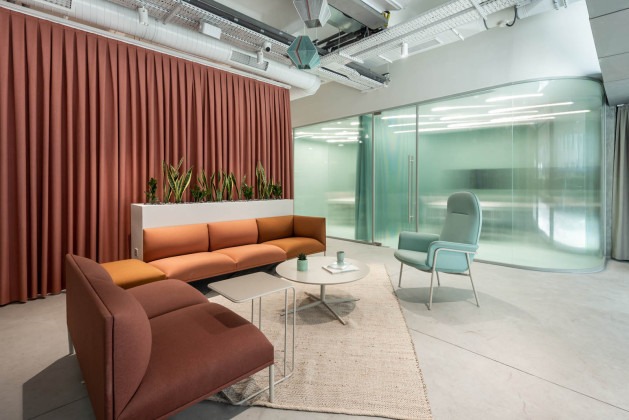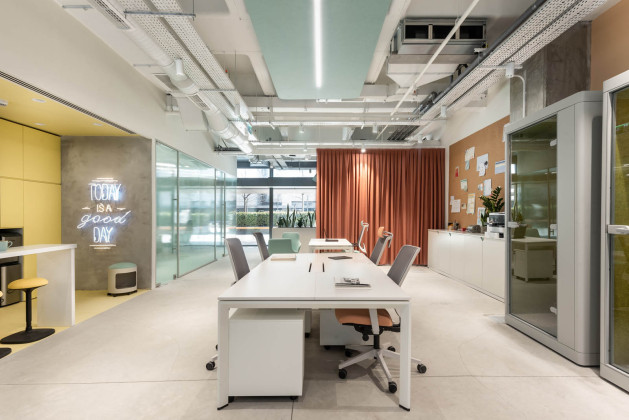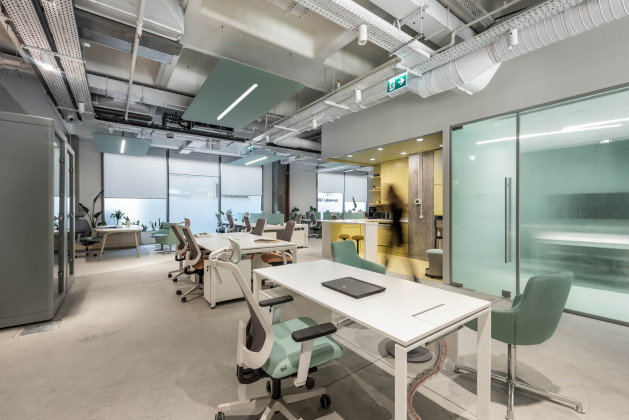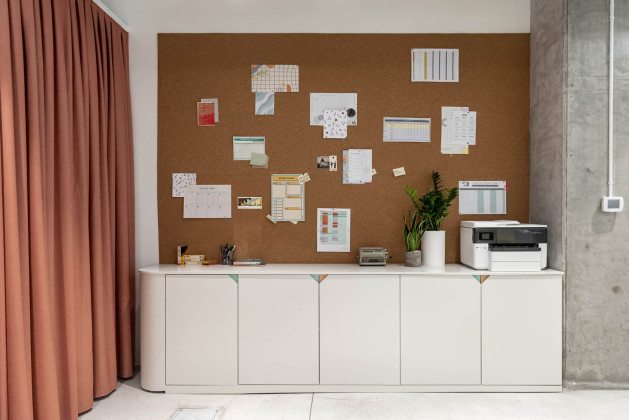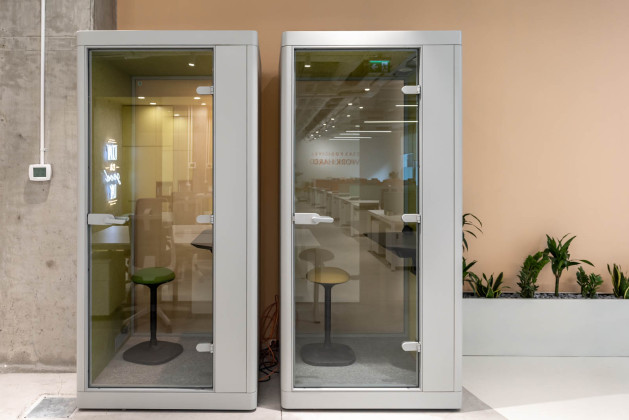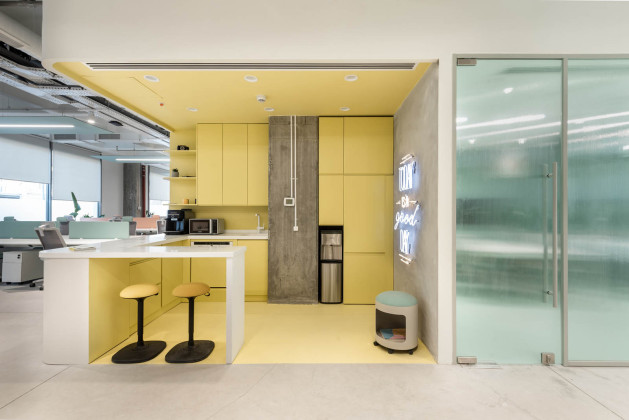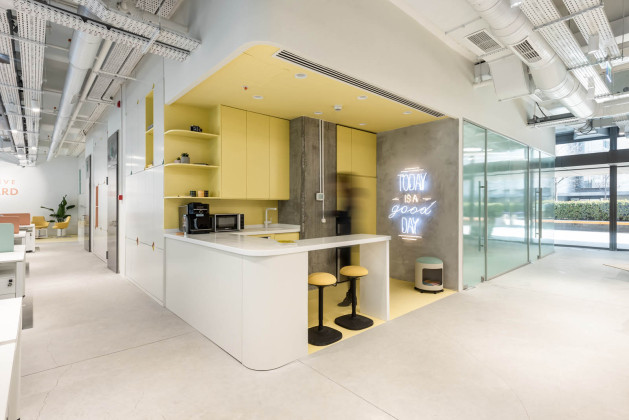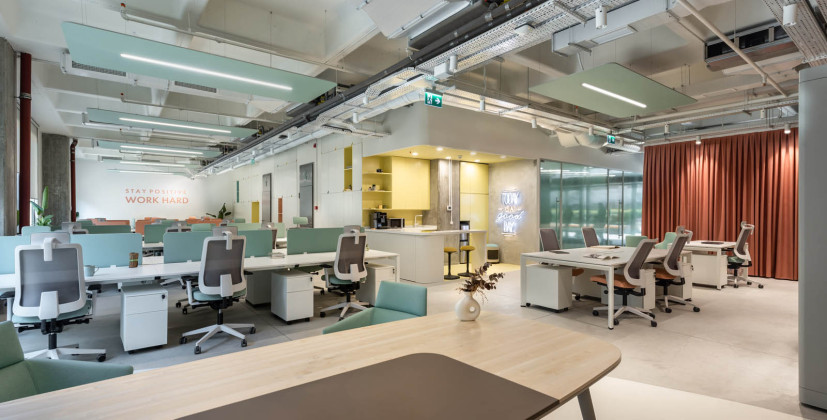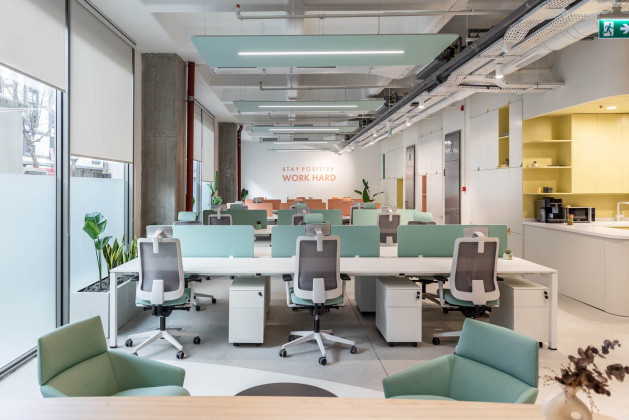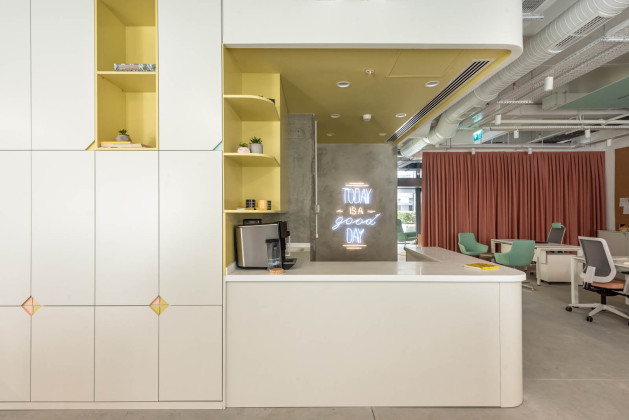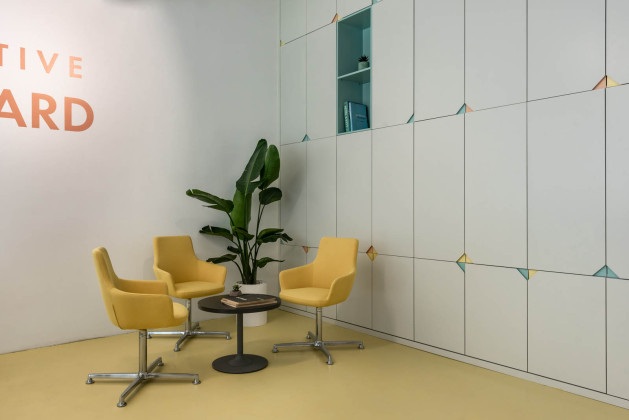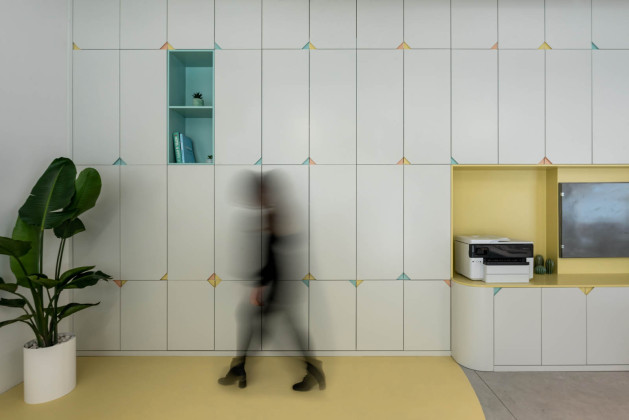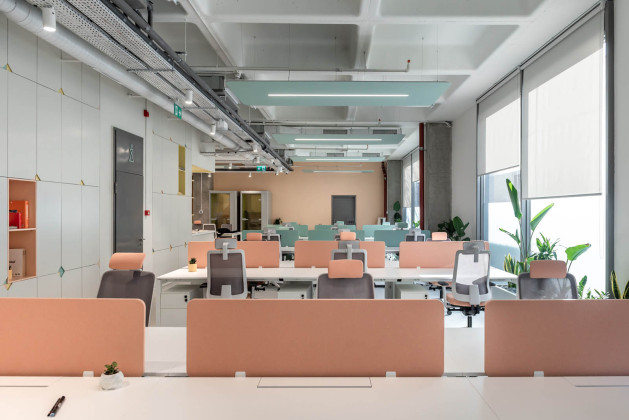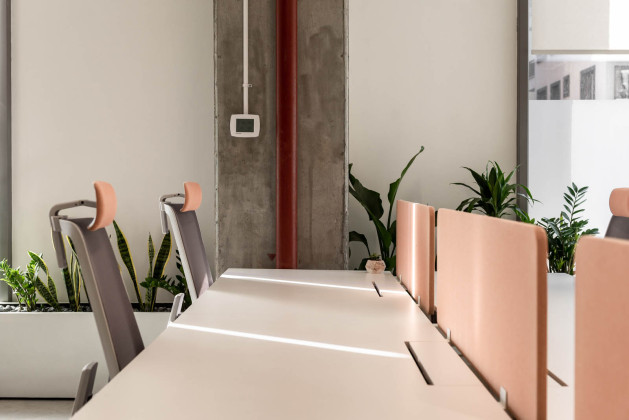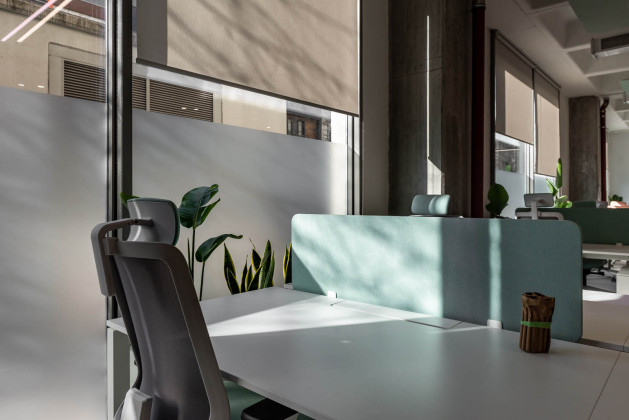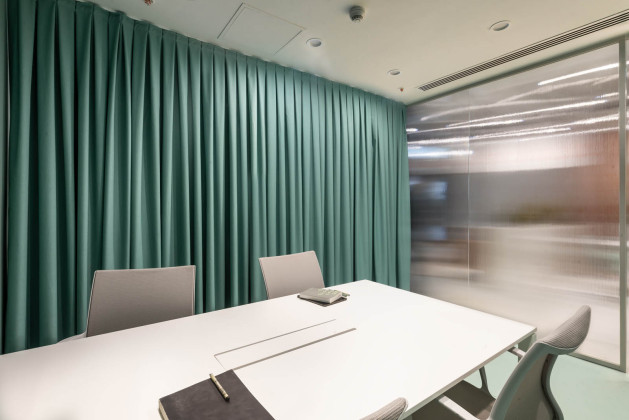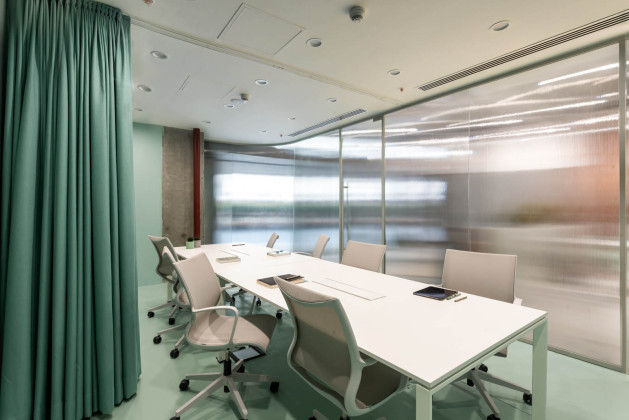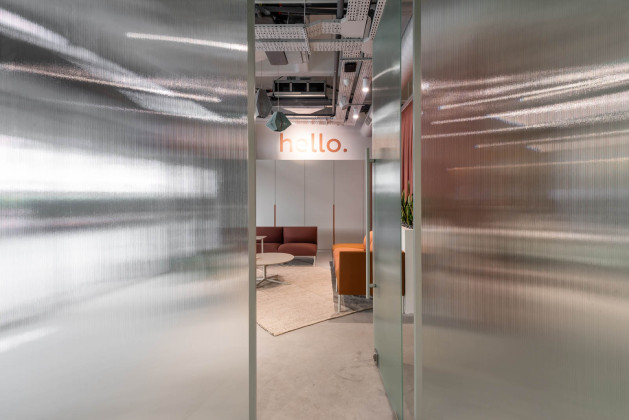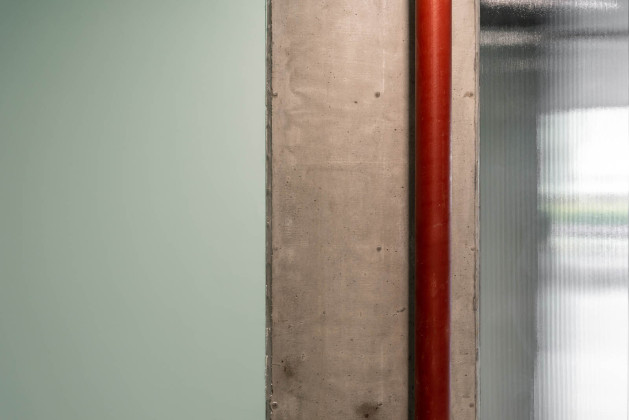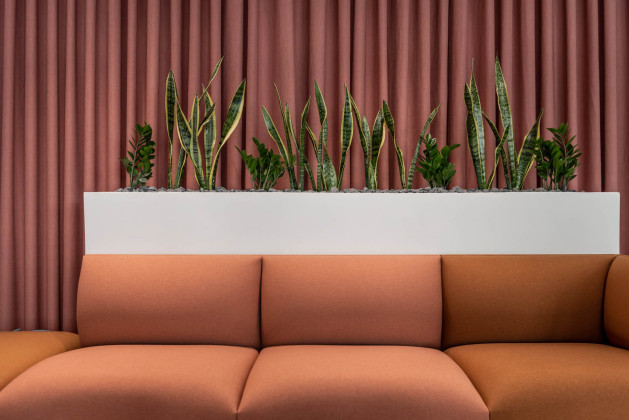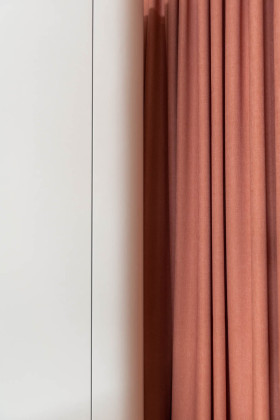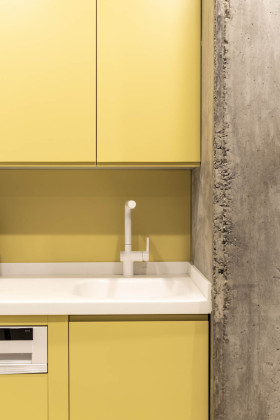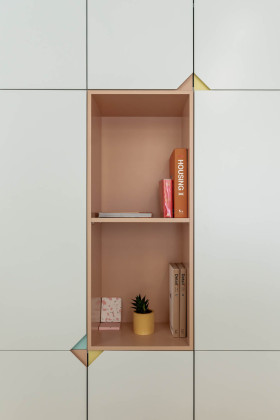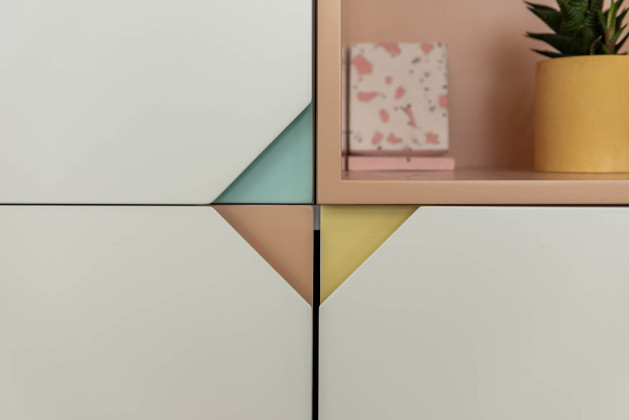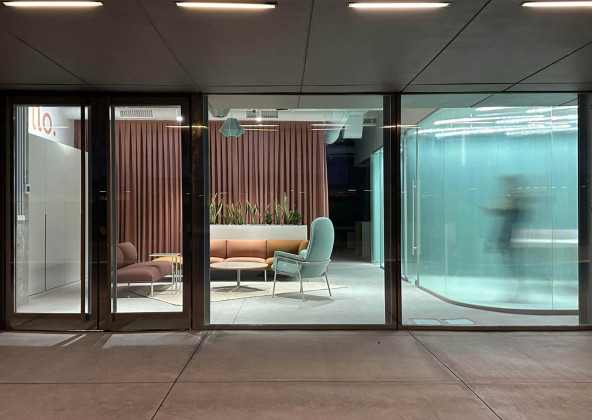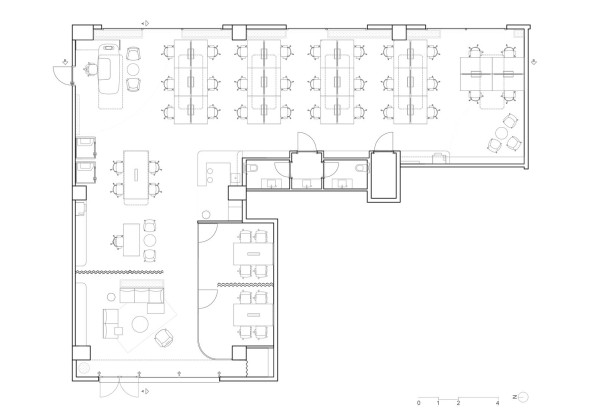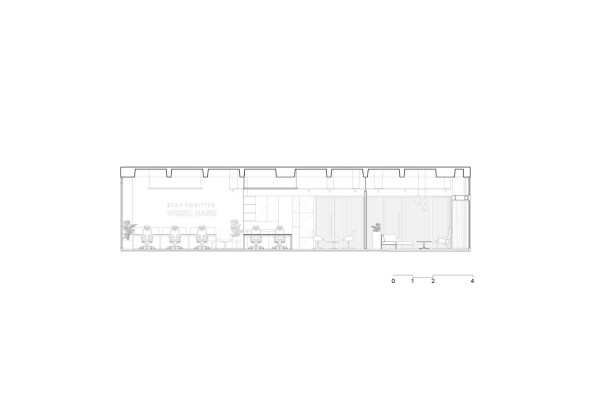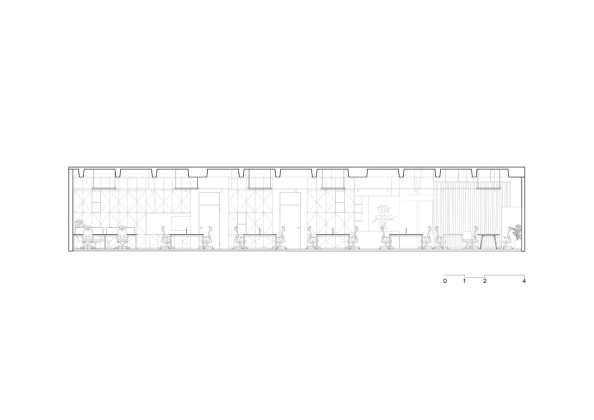K2 Office
K2 Office, designed by Base Atelier as the financial affairs office of an automotive company, is located in Kağıthane, Istanbul. The office describes the project as follows:
The project was built in a volume with a net floor area of 250 m2 and a ceiling height of 3.60 m. The office was designed with an open floor and ceiling plan; it can be spatially described under the headings of entrance and resting area, meeting room, technical room, kitchenette, restrooms, work areas, meeting areas and executive area. However, the spaces in between, arising from the intricate relations of all these spatial formations with each other, are important elements of the architecture aimed during the design process.
The office, designed in a linear plan, welcomes the user with a waiting and resting area at the entrance. The meeting room, adjacent to this space, directly affects the atmosphere of the entrance area through optical illusions created by the ribbed glass used on the separators. Through the acoustic curtain that borders the entrance area, one enters the working space. At this point, a kitchenette, which we can call the central point of the project, is positioned to serve the entire office. The workstations and executive desks that begin in this area, spread throughout the space and shape the rest of the volume. The walls of these working areas are used as storage areas. To ensure aesthetic integrity, the colors that dominate the space are projected onto the niches and handle details of these storage areas. Restrooms are accessible through the doors in between these storage areas.
The state of simplicity, which is an inevitable necessity for workspaces, is combined with the choice of pastel colors and concrete texture, creating a space where different approaches can be experienced together. The balance and consistency of colors spread throughout the project with each other in the transitions between materials has become one of the main elements of the project. Taking into account the pointiness, linearity and spatiality of colors and textures, the aim was to create a spatial experience that results from their defined relationships. Using this approach, color and texture applications defined the space without separating horizontal and vertical planes. In addition, an aesthetic was designed that incorporated many mechanical elements that are in the open ceiling. Considering the complex visual experience created by these mechanical elements, all ceiling elements were painted white to create a passive background in the space. As a result, the only elements suspended from the ceiling and included in the space with color are the lighting elements. In addition, some of the electrical switches and some control panels that users interact with directly were covered with white thin tubes that reflect the mechanical linearity of the ceiling.
K2 Office was designed in search of a dynamic space. It is aimed to enable the users to shape the space according to their needs. Reasons for this are not only about common office needs, but also the dynamics of the project area itself. Since the project area is located on the ground floor, it has a direct connection with the courtyard of the office complex in which it is located. To control the permeability between the interior and exterior spaces resulting from this situation, a movable acoustic curtain was designed to separate the two areas. The aim of this curtain is to define a semi-permeable space between the courtyard, the resting area and the work area. However, on the street-facing façade of the project, this permeability was considered a problem and was prevented with a translucent window film.
Acoustic performance requirements, which are essential for offices, were also one of the main inputs for the design of K2 Office. With this in mind, many acoustic components were used throughout the office. Each of these components was considered as a component with its own functions. Elements such as table top linear lightings, cork communication board, acoustic divider curtain, and separators between desks were positioned so that each would perform its own specific functions while providing acoustic performance. In addition, acoustic wall panels were also used for the meeting room. Despite all this, 2 acoustic pods were also placed in the space, which can still be used if needed.
The meeting room, which is one of the most important spaces of K2 Office, was designed as a singular space by separating it from the rest of the office. The meeting room was planned in such a way that, if necessary, it can be divided into two separate rooms, considering the principle of effective use of the spaces. In this way, instead of a single use, two different types of use were defined for the space. The ribbed glass used for the windows of the meeting room, was used to minimize the visual connection of the room to the outside without preventing daylight from passing through. This was to ensure that users could concentrate better. Another advantage of the ribbed glass is that users’ facial expressions during the meetings cannot be read from the outside.
 22.09.2023
22.09.2023



